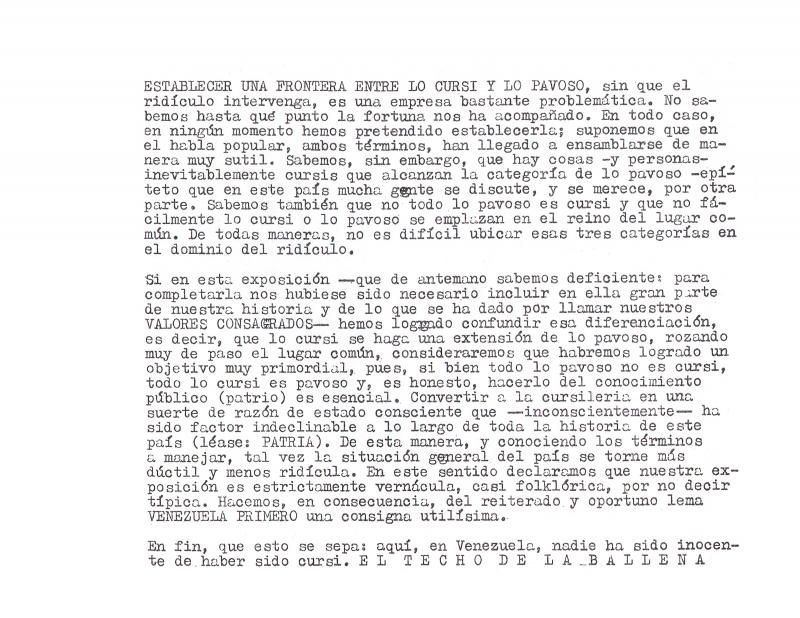This article presents the seminal Salon Espacios Vivientes held in Maracaibo, between February 14 and 28, 1960. The author gives two of the co-organizers, critic and painter Juan Calzadilla (b. 1930) and painter and photographer Daniel González (b. 1934), to express the goals at stake, and the choice of that city for a “free painting” salon. Most of their points justify Maracaibo, a response to Caracas as the cultural hub of the country. They mention Renzo Vestrini (1906–1976)—an Italian-born artist and postwar immigrant working on Informalism in Maracaibo since 1955, before the tachist proposals were shown in Caracas—who was associated with Sardio (1955–1961), a literary group in overt opposition to the authoritarian regime of Marcos Pérez Jiménez (1953–58). After Sardio’s dismantling, some of its members joined El Techo de la Ballena, an artistic and literary group that is known by its caustic creativity, biting publications, and scandalous events. Both Calzadilla and González were its co-founders in tandem with Carlos Contramaestre. This article was written a year before El Techo de la Ballena emerged, however, both are already articulating their rejection of traditional figuration and geometric abstraction in order to enhance the informal and lyrical sides of abstraction.
Besides Calzadilla and González, Manuel Quintana Castillo, Perán Ermini, Josefina Urdaneta, and Alberto Urdaneta are mentioned as co-organizers of the Salon—the last two Maracaibo-based artists and the others from Caracas. Among the participants: Vestrini and Contramaestre, Pascual Navarro, Ruben Nuñez, Alberto Brandt, Jorge Castillo, Mercedes Pardo, Julio Borges, Perán Ermini, Marcos Miliani, Daniel González, Pedro Briceño, Fernando Irazábal, Raúl Garmendia, Hernán Dupouy, Ramón Vásquez Brito, Maruja Rolando, Mary Brandt, Molos Jonic, Teresa Casanovas, Rafael Sandoval, Puig, Luis Ramírez, Pedro González, Ralph Ermini, Almenar, Alcides López Orihuela and Jesús Rafael Soto. Incidentally, Calzadilla’s text on the Salón speaks of thirty-four artists.
[For Calzadilla’s account, see in the ICAA Digital Archive: “Espacios vivientes” (doc. no. 1279384). For texts by El Techo de la Ballena, see “Establecer una frontera entre lo cursi y lo pavoso…” (doc. no. 1059586); “Para la restitución del magma” (doc. no. 1060710); “Las ‘Instituciones de cultura’ nos roban el oxígeno, afirman” (doc. no. 1060199); Rayado sobre el Techo No. 2, editorial, “Cambiar la vida, transformar la sociedad” (doc. no. 1060254); and “Segundo Manifiesto” (doc. no. 1057677).]






